Ultra Low Noise Crystal Oscillator with 1:4 or 1:8 fan out buffer
Main function blocks are seen on the block diagram below:
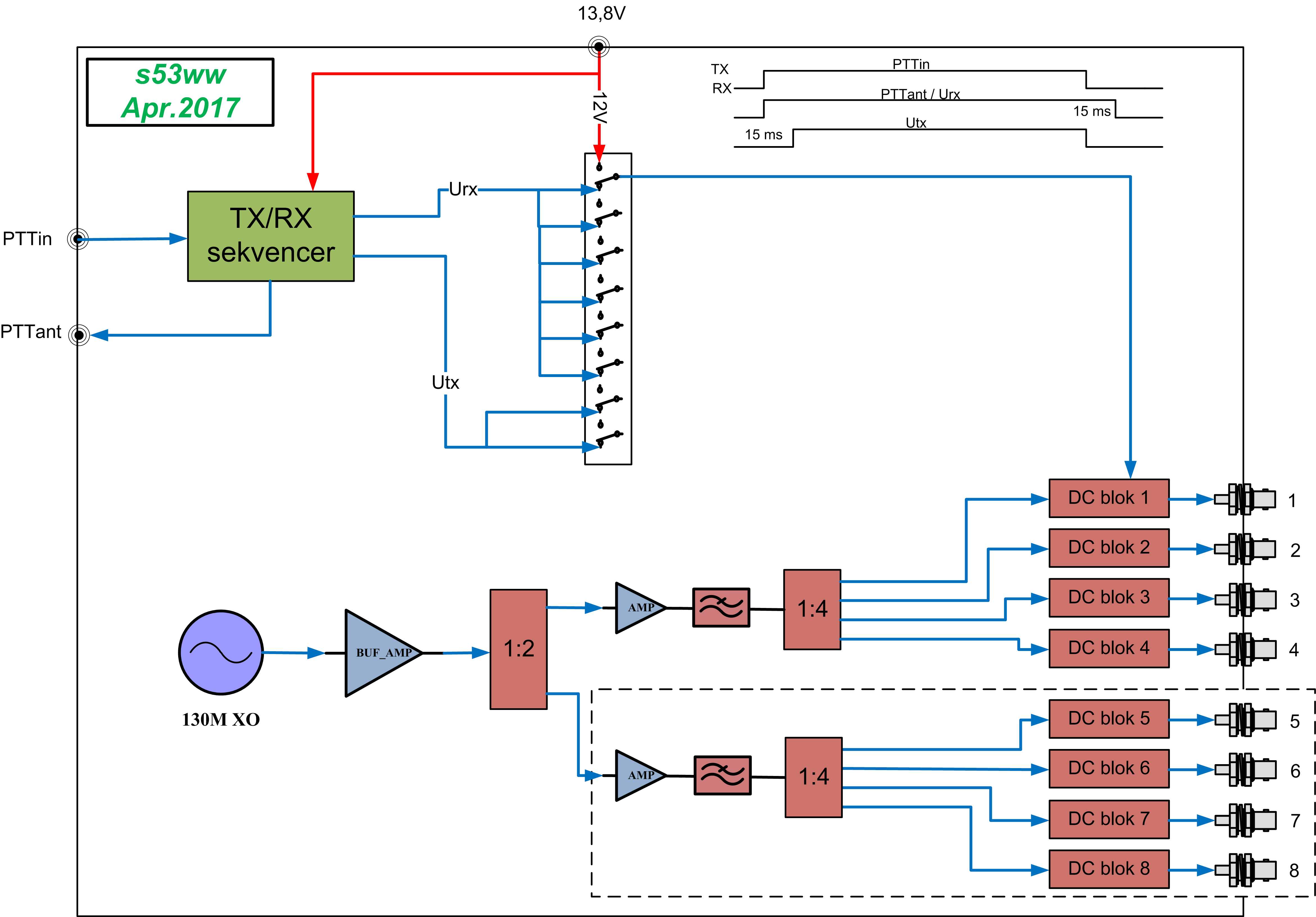
XO is of a Driscoll
type A design - there were only few documented ham radio
experiments conducted so far - and it is a modified Uwe/DC8RI
circuit (also check this design from Leif/SM5BSZ).
XO performance is achieved by using key components: high quality
5th overtone crystal, GALI-51 as sustaining amplifier, BFP196 as
isolation amp and LT3042 for providing ultra low noise power supply.
Core XO is followed by an isolation amplifier and power splitter that
feeds two 1:4 distribution boards (second distribution board is
optional).
TX/RX sequencer drives high power relais (all in parallel)
and provides 12V power supply for RX and TX converter(s) via
LO output connectors (DC over coax).
Power supply outputs are configurable (RX,
TX or zero voltage - only two outputs can supply TX
voltage).
Phase noise plot (TKS to S53KS) of the final design shows excellent performance.
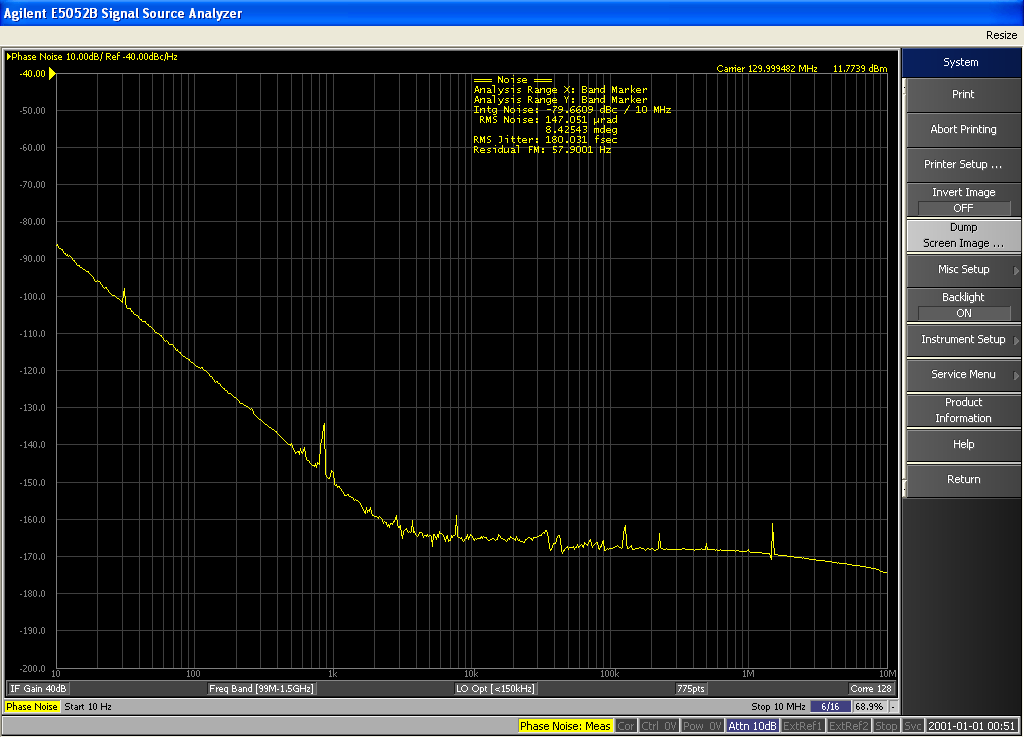
Any 5th overtone crystal in the range of about 100 MHz to 150 MHz can
be used in this design with only few passive component changes.
Few exqmples:
- 116 MHz crystal for driving 28 MHz IF 2m RX and/or TX convertres
- 137 MHz crystal for driving 21 MHz IF 70cm RX and/or TX convertres
- 125 MHz crystal for driving several SDR receivers (beamforming, MIMO, etc)
- 125 MHz crystal for high frequency (1 GHz+) DDS reference clock
Output power level: +9 ... +13 dBm. @ 50 ohm
Phase noise data:
| @offset |
Phase noise |
| 1 kHz |
-150 dBc/Hz |
| 10 kHz |
-165 dBc/Hz |
| 100 kHz |
-168 dBc/Hz |
| 1 MHz |
-170 dBc/Hz |
Few photos:
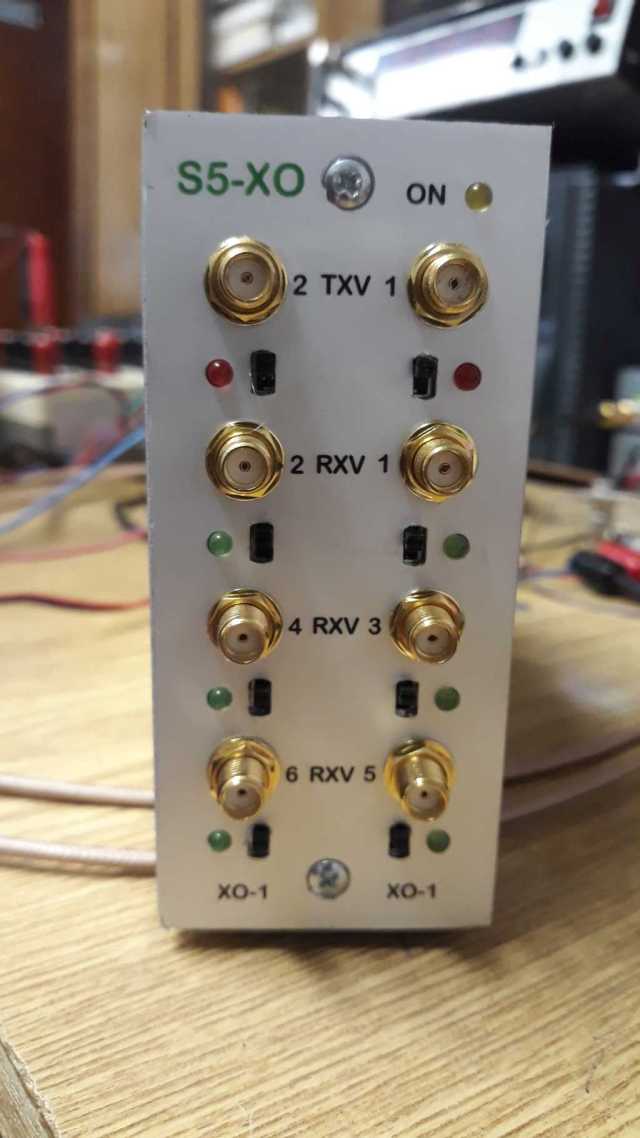
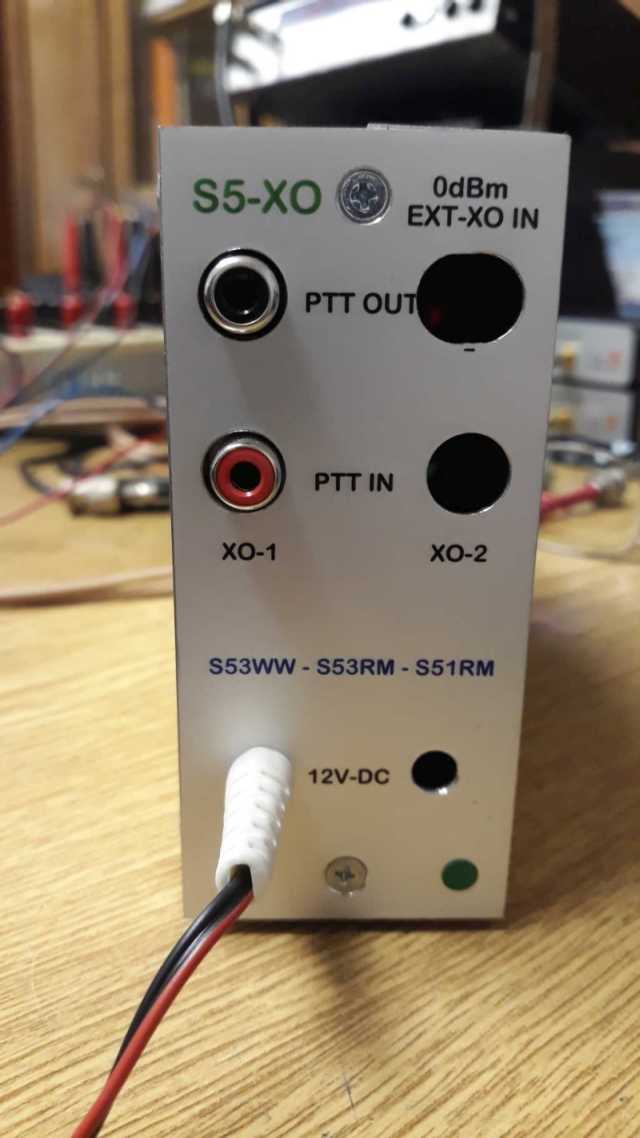
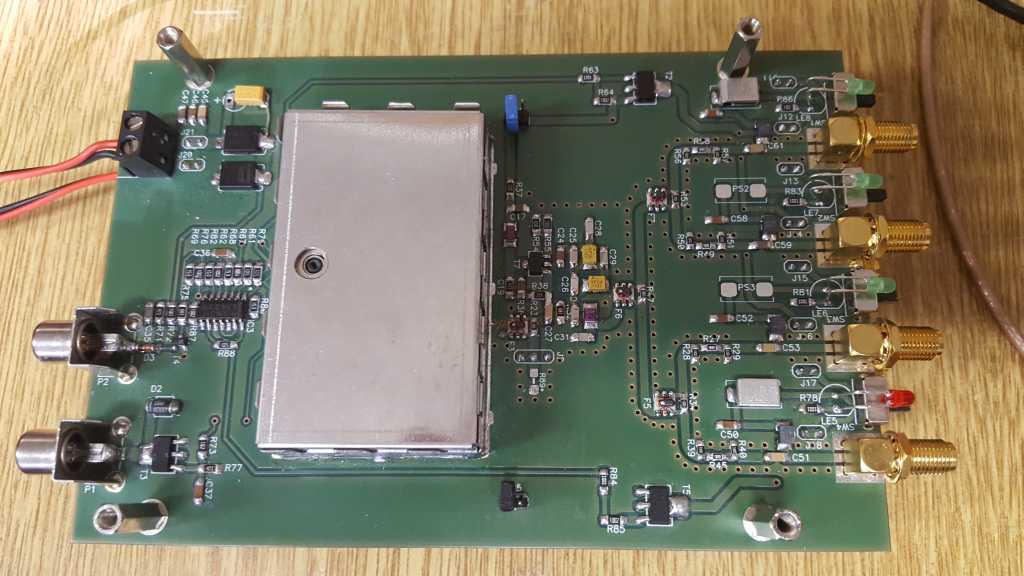
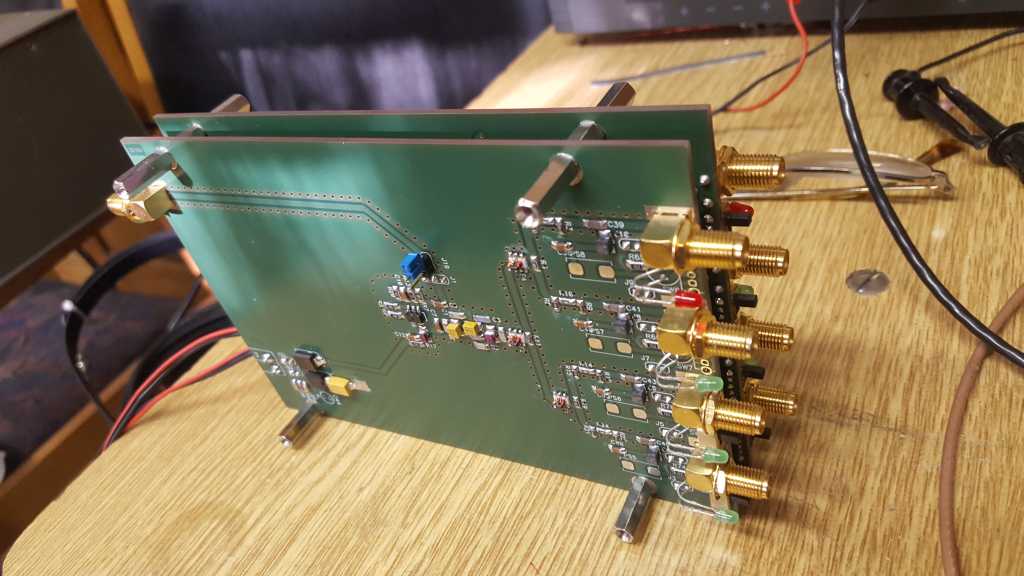
The LO module can be used to drive two (or more) Javornik-144/14
transverters. See how to do the modification here.
The picture shows how S5 XO and RX converter were used for the
first time at S59DEM contest station during July 2019 2m contest.
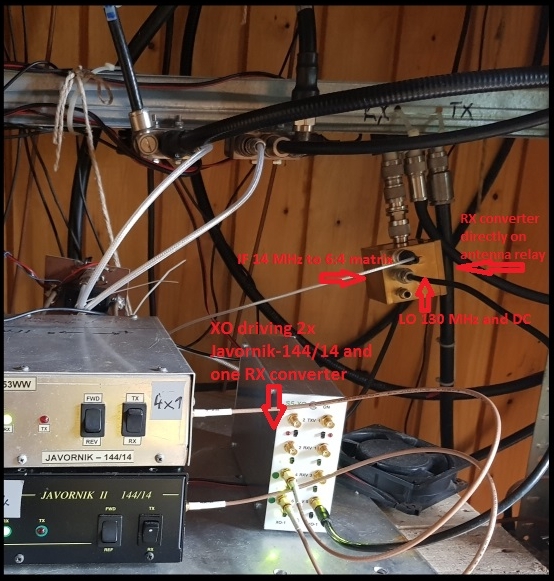
For more information contact Sine/s53rm(pri)hamradio(pika)si.
_____________________________________________________________________________
Date published: Aug. 2018
Change log:
- July 2019: added some description, pictures and phase noise plot of final design: added link to XVRT modification page.






